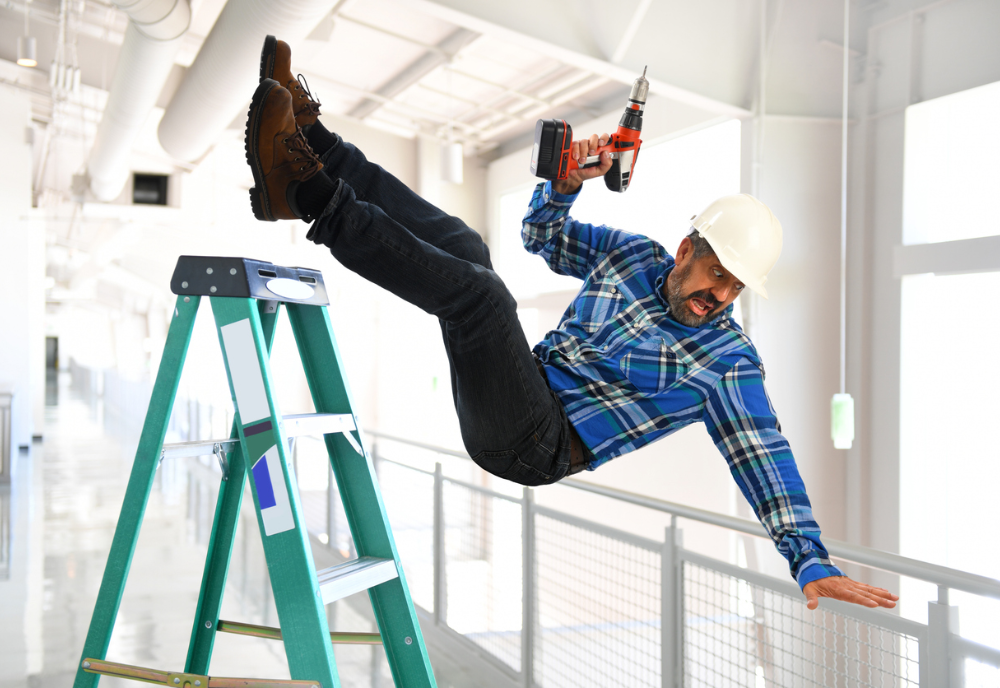March is not just another month; It's National Ladder Safety Month. This is a crucial time to reflect on ladder safety, especially considering the alarming statistics. In 2023, the American Academy of Orthopedic Surgeons reported that 500,000 people were treated for ladder-related injuries, with 300 of these incidents proving fatal. These numbers are not just statistics; they represent the lives and livelihoods of people affected by preventable accidents. Shockingly, ladder safety violations ranked 3rd among the Top 10 most cited violations by OSHA in FY 2022.
These days, we have a variety of ladder options to choose from, each designed for specific tasks and environments. Below is a list of the commonly used ladders. By understanding their features and limitations, you can make an informed decision on the best ladder for your needs.
- Stepstool
- Foldable or “A” shape ladder
- Straight ladder
- Telescopic ladders
- Fixed ladders
- Mobile ladders
- Extendable ladders
Did you know? Extension ladders are among the leading cause of ladder-related injuries due to incorrect settings and improper use of locking devices. About 40% of ladder accidents occurred while using the extension ladder.
Falls from ladders are preventable! Be sure to follow the general ladder safety practices below:
General Ladder Safety Practices:
- Inspect the ladder before each use and remove it from service until it is repaired or discarded if any of the listed are present. (check the labels and markings, broken segments, cuts, bent sections, or any integrity suspicious elements of the ladder)
- Always maintain 3 points of contact while climbing on the ladder.
- Face the ladder and never stay backward.
- Use the ladder as it is designed to be used by the manufacturer.
- Place the ladder on a stable surface with the proper ratio of 4 to 1, which means every 4 feet up and 1 foot out from the wall.
- Secure the ladder from being knocked out and barricade the ladder, if necessary, in heavy traffic to prevent knocking out.
- If using a straight or a fixed ladder, always extend the ladder above the landing area by not less than 3 feet.
- Extension ladders must be checked if they are locked when extended.
- Foldable ladders cannot be used as a straight ladder, and the top rung shall not be used unless designed to be used in that manner.
- Never exceed the maximum load of the ladder.
There are work areas where some special ladders are used; for instance, marines can use different types of ladders inside the ships, and there is a different set of safety rules for these specific types of ladders. Perform your ladder hazard assessment to see what ladder safety rules and recommendations apply to your work area.
Remember, falls from ladders are preventable. Follow these safety practices to climb with confidence!
USF SafetyFlorida can assist you in identifying potential hazards on your worksite(s), improve your safety and health programs, and even qualify your company for a one-year exemption from routine OSHA inspections. Our services are free and confidential. For more information about protecting your workforce or to request a no-cost, confidential consultation, please visit our website at www.usfsafetyflorida.com or call us toll-free at (866) 273-1105.
For more resources about safety ladders, please visit:
https://osha4you.com/ladders/ladder-safety-dos-and-donts/
www.osha.gov/sites/default/files/publications/portable_ladder_qc.pdf
https://www.osha.gov/laws-regs/regulations/standardnumber/1910/1910.23
